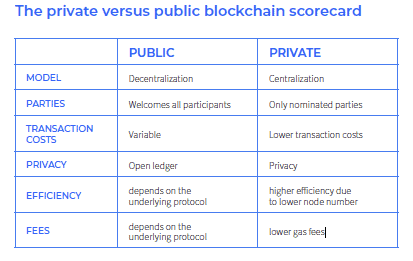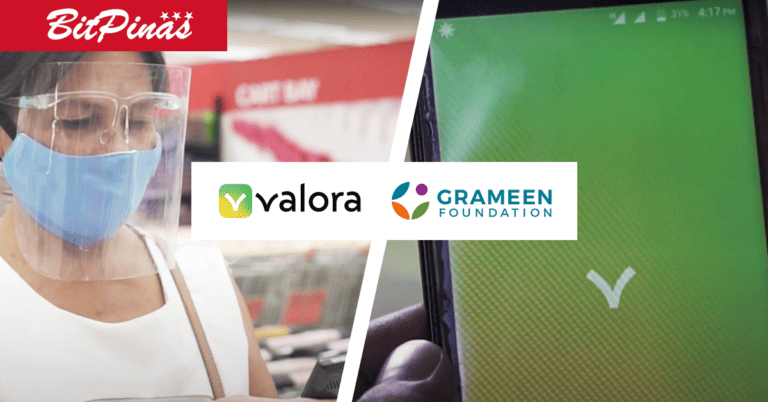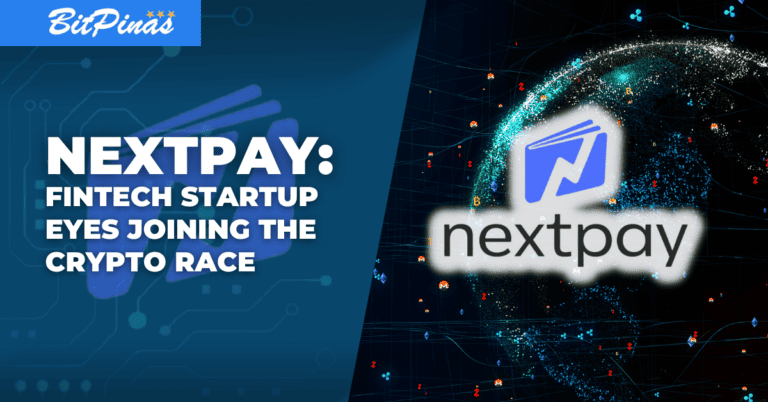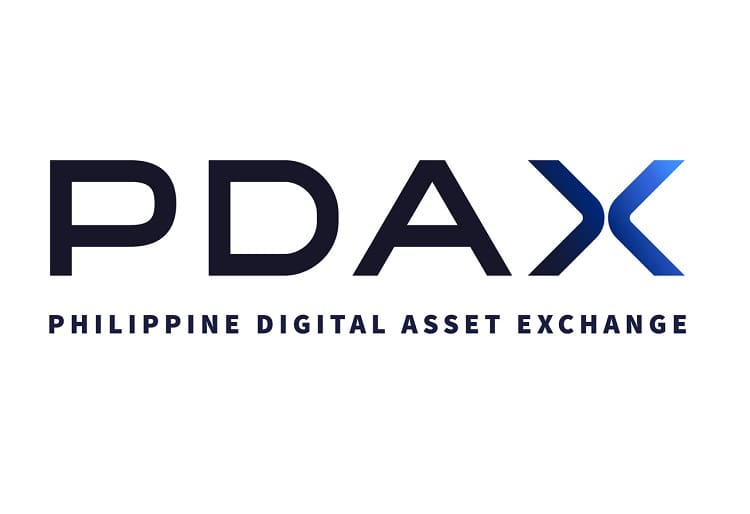How to Select the Right Blockchain for Your Organization (English and Tagalog)
Public or private blockchains – which is right for your organization?

This article is available in English and Tagalog
Public or private blockchains – which is right for your organization?
A public blockchain is a network that is free for all to participate in, without any restrictions. Anyone can see the ledger and take part in the consensus process. Tezos, for example, is a public blockchain, which means anyone can add nodes (or ‘bake’ in the Tezos ecosystem) and use the blockchain for transactions.
A private blockchain, on the other hand, gives an organization authority over the network and is therefore not open to public participation.
This section looks at the advantages and disadvantages of public and private blockchains and provides guidance on which option could be the right fit for your company’s needs.
What is a public blockchain?
Blockchains were originally conceived as a public, open-source platform. All public blockchains have a consensus mechanism, and anyone can participate, build, transact with their peers, and take part in the consensus mechanism.
Public blockchains are fully decentralized – no one person, organization, or group holds power to decide what activity occurs on-chain. Every block added to the chain is immutable, providing excellent security and a complete record of all prior transactions.
Additional benefits include total transparency (as all participants can see the ledger), high security (see the immutability of blocks on-chain), and an open environment. Participants can also generate value by mining or baking blocks and participating in the consensus mechanism.
Depending on the KYC (Know Your Customer) procedures dApps (decentralized apps) use on public chains to verify IDs, users may be able to fully own their private keys and data stored in their on-chain wallets, known as decentralized identities. These wallets are depicted as smart contract addresses on block explorers and can also be anonymous. These users can transact with any business if the underlying blockchain technology supports it.
From a regulatory lens, opportunistic bad actors could capitalize on the lack of regulation to engage in illegal activities such as money laundering or the trafficking of controlled substances. Despite this, the community can work to punish bad actors and restore balance to the network. This can be done by auditing the flow of funds on-chain due to the transparent nature of the blockchain. So while there is no central authority, there are centrally-guiding principles of immutability and transparency embedded into smart contract code. This creates a system of checks and balances. Eliminating their transaction processing rights is one such punishment.
Public chains are also more resilient as their nature stems from accumulated code security. Put simply, Tezos offers software that has survived the constant challenge of securing large-scale public blockchains. This means they have reached a level of safety that’s not attainable by enterprise-driven efforts. These enterprise efforts only have accumulated experience in securing the chain in the form of a number of private deployments.
In essence, a public blockchain, by its very nature, is strengthened by the number of nodes participating in the network. A private chain simply can’t compete in terms of scale and exposure to a wider range of network events.
Overall, public blockchains offer full empowerment to their users. It is not governed by a central authority and all users are equally free and able to participate, generate value, or transact business.
Of course, enterprises utilizing public blockchains will need to comply with the laws of the country they’re operating their node (or nodes) in, subject to Know Your Customer (KYC) and Anti-Money Laundering (AML) regulations in particular.
Mempools
This is where a mempool comes into the picture. A mempool is a set of all pending transactions, with all transactions being broadcast via a blockchain’s nodes. It’s possible for every node to have a different mempool to its peers, and bakers on the Tezos network are able to choose any transaction they like from the mempool. This means bakers can be selective by only processing transactions that are compliant with local regulations.
Mempools, however, don’t have to be public. Private mempools let a transaction issuer conduct operations on a private server, such as transfers and smart contract deployment. That server is only accessible to a group of select bakers authorized to validate the operations on that particular private node. This can offer enterprises an added layer of privacy and security when conducting transactions on a public blockchain.
Because mempools don’t have to be public, it’s critical that enterprises should consider building their blockchain applications and businesses on the public blockchain. This enables transactions to be conducted in compliance with local regulations. Furthermore, privacy is possible, the gas fees are low and because the software is open source, a business can design and launch a project on-chain.
The following section looks at private blockchains, how they differ from their public peers, and why a user or company may choose to create a private blockchain.
Private blockchain
The main difference between public and private blockchains is that private blockchains are created by a single entity (or consortia) and therefore only have a partially decentralized authority. It’s not possible for just anyone to create a node or participate in the consensus mechanism.
Because their ledgers are not public, private chains are, as their name suggests, private, which could suit corporate users well. A private blockchain could be used for corporate intellectual property, internal transactions, and any other activity where the ability to view the ledger publicly (as in a public blockchain) would not suit corporate interests. Private blockchains are generally more efficient than their public peers because of the limited number of nodes. With a public chain, the more nodes, the greater the computational power required, and the longer a transaction takes to write to the blockchain. A private chain only allows a handful of nodes or users, and so adding blocks to the chain takes less time, energy, and resources.
The gas fees (that is, the fees charged to write a transaction to the blockchain) can be significantly less than many public chains, although this varies from public blockchain to public blockchain.
Private blockchains also don’t have the problem of illegal activity because only approved players can create nodes and write transactions to the chain. Corporations can also write the rules for their private blockchain, and everyone who participates is bound to those rules.

(Tagalog) Pagpili ng Tamang Blockchain
Ang pampublikong blockchain ay isang network na bukas para sa lahat nang walang kahit anong restriksyon. Kahit sino ay may kakayahang makita ang ledger at sumali sa consensus process. Ang Tezos, halimbawa, ay isang pampublikong blockchain, ibig sabihin, kahit sino ay maaaring magdagdag ng nodes (o ‘bake’ sa Tezos ecosystem) at gumamit ng blockchain sa mga transaksyon.
Sa kabilang banda, ang pribadong blockchain naman ay nagbibigay sa organisasyon ng awtoridad sa network kaya ito ay hindi ito bukas para sa partisipasyon ng publiko.
Sa bahaging ito, titignan natin ang adbentahe at disadbentahe ng pampubliko at pribadong blockchain at magbibigay rin tayo ng gabay sa pagpili ng opsyon na angkop sa pangangailangan ng iyong kompanya.
Ano ang pampublikong blockchain?
Orihinal na binuo ang blockhcain bilang isang pampubliko at open-source na platform. Lahat ng pampublikong blockchain ay may consensus mechanism, at kahit sino ay maaring lumahok, bumuo at mag-transact kasama ang iba, at makibahagi sa consensus mechanism.
Ang mga pampublikong blockchain ay ganap na desentralisado – walang kahit sinong tao, organisasyon o grupo ang may hawak ng iisang kapangyarihang magdesisyon sa kung anong aktibidad ang dapat mangyari sa chain. Ang bawat block na naidagdag na sa chain ay hindi na mababago, kaya nakapagbibigay ito ng mahigpit na seguridad at kumpletong tala ng lahat ng mga naunang transaksyon.
Ang karagdagang mga benepisyo pa ay ang mga sumusunod: ganap na transparency (dahil ang lahat ng mga kalahok ay may kakayahang makita ang ledger), mataas na seguridad, at ito ay isang bukas na environment. Ang mga kalahok ay maaari ring mag-generate ng halaga sa pamamagitan ng pagmina o pag-bake ng mga block at paglahok din sa consensus mechanism.
Depende sa KYC (Know Your Customer) procedures dApps na ginagamit sa mga pampublikong blockchain para mag-verify ng IDs, maaaring ganap na makapagmay-ari ang isang user ng sarili niyang private keys at data na naka-store sa kaniyang on-chain wallets, na tinatawag na decenralized identities. Ang mga wallet na ito ay inilalarawan bilang mga smart contract address sa block explorers at maaari ring maging anonymous. Ang mga user na ito ay may kakayahang mag-transact sa kahit anong business kung ang pinagsasaligang blockchain nito ay sumusuporta dito.
Kung regulasyon naman ang pag-uusapan, maaaring kapitalihin ng mga oportunista ang kawalan ng regulasyon sa mga ilegal na aktibidad na tulad ng money laundering o trafficking ng mga controlled substance. Sa kabila nito, maaari pa ring magtulungan ang komunidad na parusahan ang mga masasamang taong ito at i-restore ang balanse sa network. Ito ay maaaring gawin sa pamamagitan ng pag-audit sa daloy ng mga pondo sa chain dala ng transparency sa blockchain. Kaya habang walang isang sentral na awtoridad, may mga centrally-guiding principle tayo ng immutability at transparency na nakaukit sa mga smart contract code. Dahil dito, nagkakaroon tayo ng sistema ng checks and balances. Ang pagtanggal sa kanilang karapatan sa transaction processing ay isa sa maaaring maging parusa.
Ang mga pampublikong chain ay mas resilient din sapagkat ang kanllang katangian ay nag-ugat mula sa naipon at pinagsama-samang code security. Sa madaling sabi, nag-aalok ang Tezos ng software na nalagpasan na ang mga pagsubok sa pag-secure ng malalaking pampublikong blockchain. Ibig sabihin nito, naabot na nila ang lebel ng kaligtasan o safety na hindi kayang abutin ng mga enterprise-driven effort. Nakakaipon lamang ang mga enterprise effort ng eksperyensya sa pag-secure ng chain sa tulong ng bilang ng private deployments.
Sa madaling sabi, ang isang pampublikong blockchain ay pinalalakas ng bilang ng mga node na kalahok sa network. Kaya naman hindi kayang makipagkompetensya ng isang pribadong chain pagdating sa laki at exposure sa mas maraming mga network event.
Sa kabuuan, nagbibigay ang pampublikong blockchain ng empowerment sa kanilang mga user dahil ito ay hindi pinamamahalaan ng iisang sentral na awtoridad at ang lahat ng user ay malaya at may pantay na kakayahang lumahok, mag-generate ng value at mag-transact ng business.
Siyempre, ang mga enterprise na gumagamit ng pampublikong blockchain ay kailangan sumunod sa batas ng bansa kung saan nila ino-operate ang kanilang node (o mga node), partikular na sa ilalim ng regulasyong Know Your Customer (KYC) at Anti-Money Laundering (AML).
Mempools
Dito papasok ang mempool. Ang mempool ay isang set ng lahat ng pending na transaksyon, kung saan ang mga transaksyong ito ay bino-broadcast sa pamamagitan ng mga node sa blockchain. Imposible para sa bawat node na magkaroon ng mempool na iba sa kanyang mga kasama, at ang mga baker sa Tezos network ay may kakayahang mamili ng kahit anong transaksyon na gusto nila mula sa mempool. Ibig sabihin, maaaring maging selective ang mga baker sa pamaamgitan ng pag proseso lamang ng mga transaksyon na sumusunod sa mga local regulation.
Gayunpaman, ‘di kailangan ng mga mempool na maging pampubliko. Hinahayaan ng mga probadong mempool ang isang transaction issuer na magsagawa ng mga operationsa isang private server, na tulad ng transfer at samrt contract deployment. Ang server na ito ay accesible lamang sa isang grupo ng mga piling baker na pinahihintulutang mag-validate ng operation sa nasabing private node. Ito ay maaaring magbigay sa mga enterprise ng karagdagang layer ng privacy at seguridad sa tuwing nagsasagwa ng transaksyon sa isang pampublikong blockchain.
Dahil hindi naman kailangan ng mempool na maging pampubliko, mahalagang ikonsidera ng mga enterprise ang pagbuo ng kanilang mga blockchain application at business sa loob ng isang pampublikong chain. Binibigyang kakayahan nito na miasagawa ang mga transaksyon habang sumusunod sa mga local regulation. Bukod pa riyan, posibleng makamit ang privacy, ang gas fee ay mura at dahil open-source ang software, ang isang business ay maaaring makapag-design at makapaglunsad ng proyekto sa chain.
Ang susunod na bahagi ay tatalakay naman sa pribadong blockchain, sa kung paano ito naiiba sa katapat nitong pampubliko at sa kung bakit ang maaaring piliin ng isang user o kompanya na bumuo sa isang pribadong blockchain.
Private blockchain
Ang pangunahing kaibahan ngpribadong blockchain sa pampublikong blockchain ay binuo ito ng isang single entity (o consortia) kaya mayroon itong bahagyang desentralisadong.awtoridad. Imposible para sa kahit sino ang bumuo ng isang node o makilahok sa consensus mechanism.
Dahil ang mga ledger nito ay hindi pampubliko, ang mga pribadong chain ay, base na rin sa pangalan nito, pribado na angkop para sa mga corporate user. Ang isang pribadong blockchain ay maaaring gamitin para sa corporate intelectual property, mga internal na transaksyon, at kahit ano pang aktibidad na kung saan ang kakayahang makita ng publiko ang ledger (na tulad sa mga pampublikong blockchain) ay hindi angkop sa interes ng mga corporate user. Karaniwang mas episyente ang pribadong blockchain kumpara sa katapat nitong pampubliko dahil sa limitado nitong bilang ng mga node. Sa siang pampublikogn chain, kung mas marami ang node, mas malaki ang kakailanganing computational power, at mas mahaba ang guguguling oras para maisulat ang transaksayon sa blockchain. Kaunti lamang ang pinapayagang mga node or user sa pribadong blockchain, kaya ang pagdagdag ng mga block sa chain ay mangangailangan lamang ng kaunting oras, energy at resources.
Ang mga gas fee (ito ay ang mga fee na sinisingil sa pagsulat ng transaksyon sa blockchain) ay maaaring maging mas kakaunti kumpara sa maraming pampublikong chain, bagaman nagiiba-iba ito sa bawat isang blockchain.
Ang mga pribadong blockchain din ay walang kinahaharap na problema pagdating sa ilegal na aktibidad dahil tanging ang mga aprubadong player lamang ang maaaring makapagbuo ng node at magsulat ng transaksyon sa chain. Ang mga korporasyon ay maaari ring magsulat ng mga tuntunin o rules para sa kanilang mga pribadong blockchain, at ang bawat isa na kalahaok dito ay saklaw ng mga tuntuning ito.

This article is published on BitPinas in collaboration with TZ APAC: How to Select the Right Blockchain for Your Organization (English and Tagalog)
Disclaimer: BitPinas articles and its external content are not financial advice. The team serves to deliver independent, unbiased news to provide information for Philippine-crypto and beyond.





